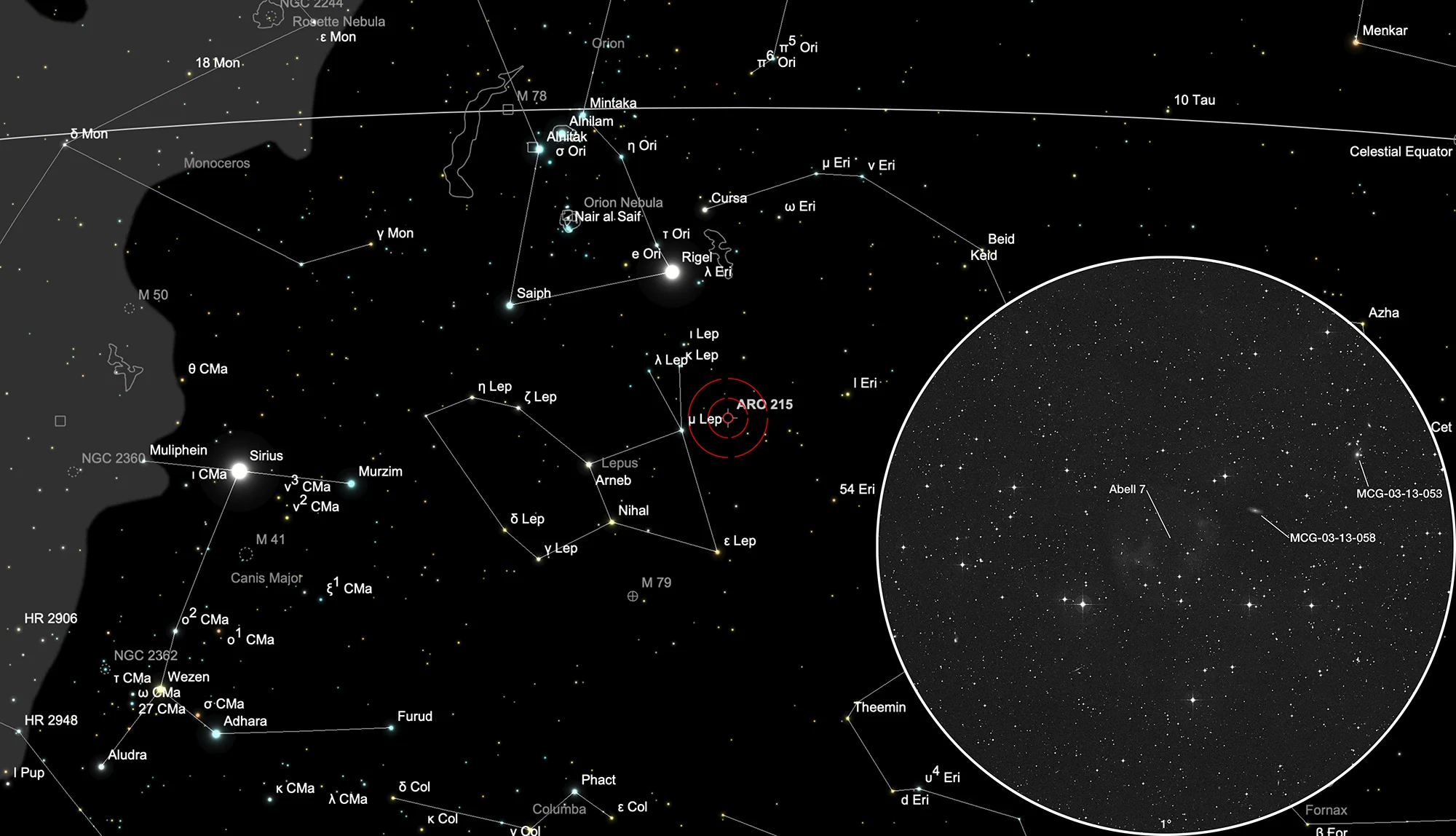Planetary Nebula Abell 7

History
The planetary nebula Abell 7 (PK 215-30.1) was discovered in 1955 by the American astronomer George Ogden Abell on the photo plates of the Palomar Observatory Sky Survey (POSS). In 1955 he published a first list of 13 globular clusters and the positions of 73 planetary nebulae. The PN had the number 6 (A55 6). In 1966 Abell published a completed list including the size and description of the 86 planetary nebulae discovered on the POSS photo plates. He described the morphological appearance of the PN as «D» (a ring of variable thickness). [331, 332]
The designation PK 215-30.1 originates from the two Czechoslovak astronomers Luboš Perek and Luboš Kohoutek, who in 1967 compiled a catalog of all the planetary nebulae of the Milky Way known at the time. [146]
Physical Properties
| Designations | PN G215.5-30.8: A 7, PK 215-30.1, A55 6, ARO 215, VV' 27 |
| Right Ascension (J2000.0) | 05h 03m 08s |
| Declination (J2000.0) | -15° 36' 13" |
| Dimensions | 760." (optical) |
| Radial Velocity | +18.0 ± 7.5 km/s |
| C-Star Designations | AG82 38, CSI -15 -05009, FB 43, UBV 4868 |
| C-Star Magnitude | U: 13.81, B: 15.15, V: 15.44 |
| C-Star Spectral Type | DAO, Hg O(H) |
| Discoverer | ABELL 1955 |
Finder Chart
The planetary nebula Abell 7 is located in the constellation Lepus south of Orion. On 9 December it is in opposition to the Sun and crosses the meridian at local midnight. The best time to observe is August to May, when it is highest at night.
